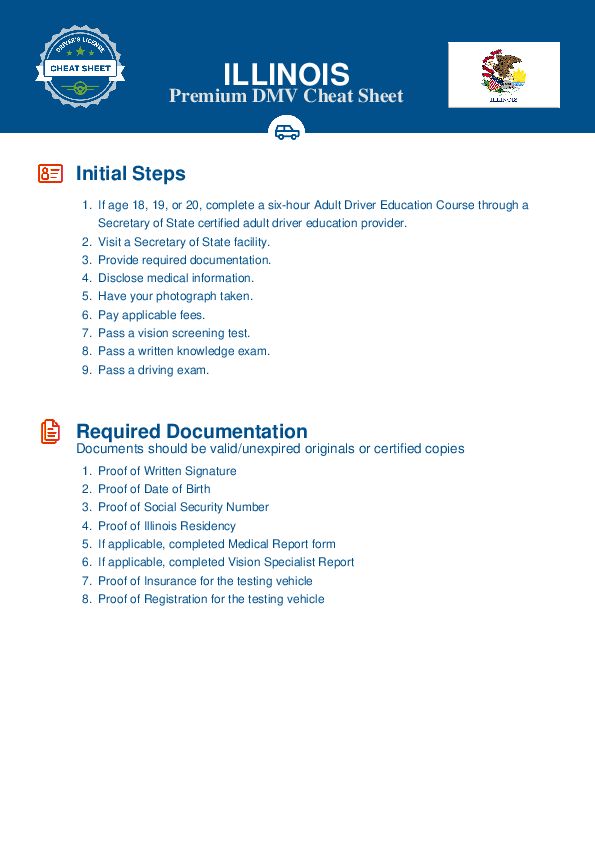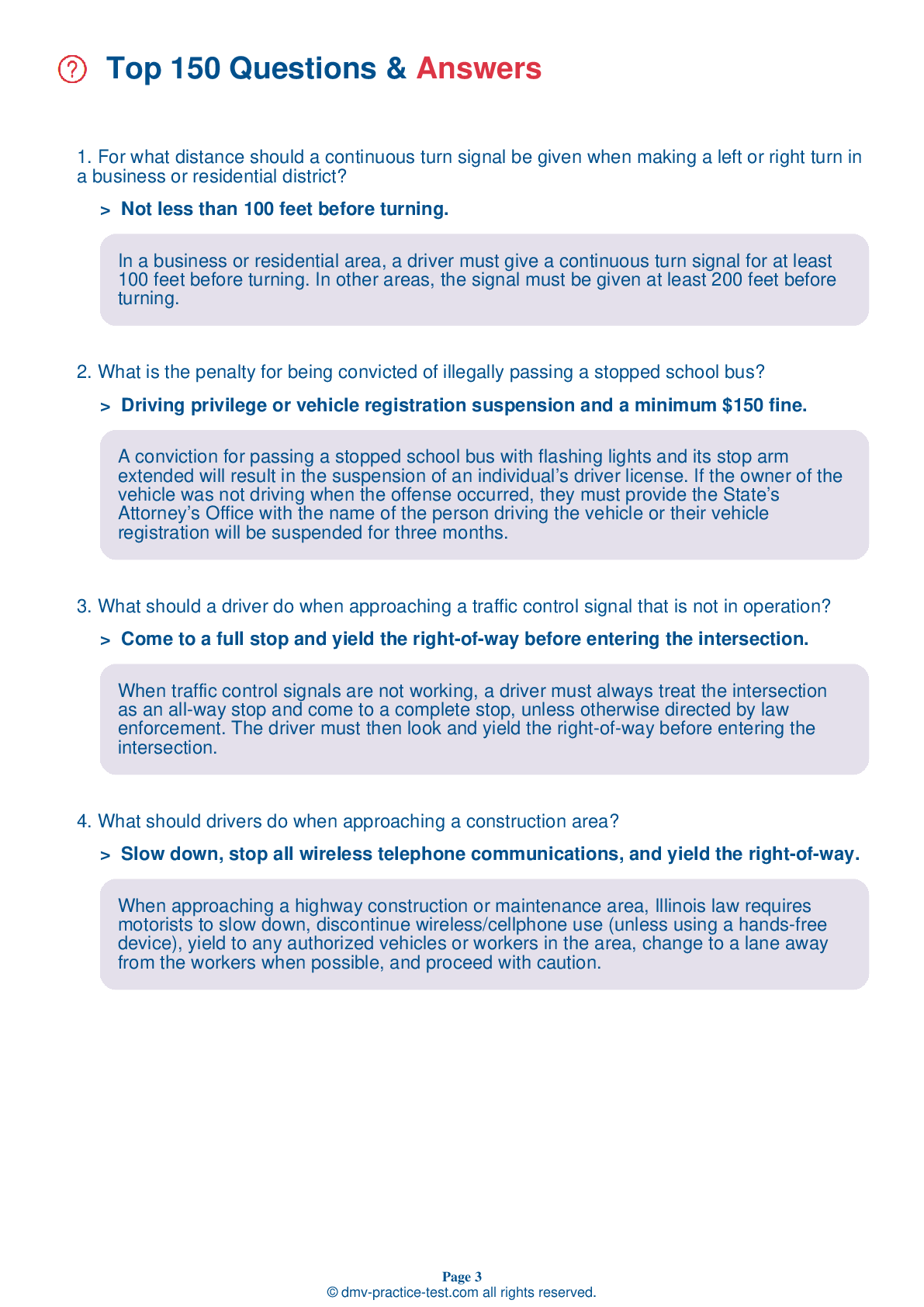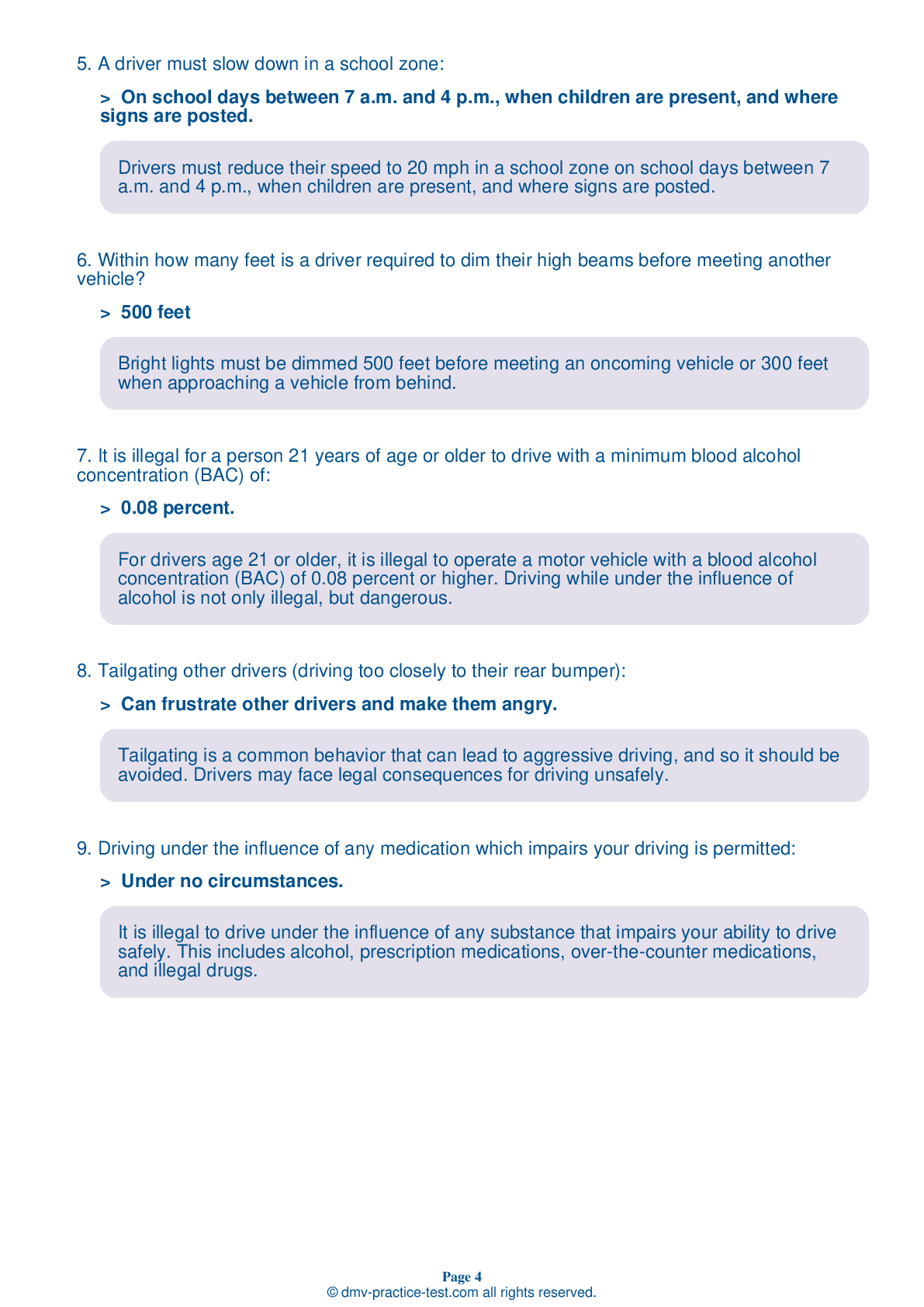FREE Illinois DMV Practice Test #14 Page 2 of 3
For January 2026, this set of Illinois DMV practise tests has been updated. It includes questions based on the most important traffic signs and rules for 2026 from the Illinois Driver Handbook. To study for the DMV driving permit test and driver's licence exam, use actual questions that are very similar (often identical!) to the DMV driving permit test and driver's licence exam.
Each question on the practise exam has a tip and explanation to help you recall the ideas. Questions about traffic rules, traffic signs, and driving statutes, as well as information from the Driver Handbook, will be included in the written portion of the official DMV test.
You must properly answer 38 of the 35 questions to receive a passing mark. To help you prepare for your Illinois instruction permit or driver's licence, take our DMV practise test.
The DMV exam is offered in a variety of languages.
Using any form of testing help will result in an automatic fail, and the DMV may take further action against your driver's licence, so avoid it.
13 . This sign indicates that:
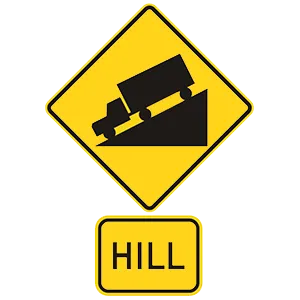
Warning signs are usually yellow with black markings. This sign warns drivers about an upcoming steep hill. Drivers should slow down and be ready to control their speed and protect their brakes from damage.
14 . When following any vehicle at night, it is important to dim your headlights.
Drivers should dim their headlights when following all vehicles, including motorcycles. Always dim your headlights when following a truck at night.
15 . If oncoming headlights are blinding you while you are driving at night, you should:
If the headlights of an oncoming vehicle are blinding, glance toward the right edge of the road instead of looking directly ahead. This should keep your vehicle safely on the road until you pass the oncoming vehicle.
16 . When parking next to a curb, you should use your turn signals:
Drivers should signal when pulling next to a curb or away from a curb.
17 . When entering traffic after being parked at a curb, you:
Any time that you merge into city or highway traffic, you should wait for a gap in traffic large enough for your vehicle to get up to the speed of other traffic.
18 . This sign means:

Signs with a red circle and diagonal line over a black symbol indicate that the action represented by the symbol is prohibited. In this case, the sign indicates that left turns are prohibited.
19 . After being pulled over by law enforcement, a driver should immediately exit the vehicle and quickly approach the officer’s squad car.
If stopped by law enforcement, you should stay in your vehicle with both hands clearly in sight on the steering wheel.
20 . When you approach an octagonal sign, you must:

An octagonal (eight-sided) sign always means "Stop." Come to a complete stop, yield to traffic and pedestrians that have the right-of-way, and proceed when the way is clear.
21 . When you see this sign, you:
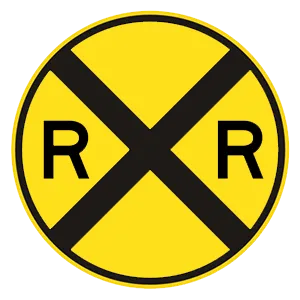
This sign indicates that you are approaching a railroad crossing. You must look, listen, slow down, and prepare to stop. Wait for any trains to pass before you proceed.
22 . When approaching a stop sign that is not marked by a crosswalk, drivers should stop their vehicles before entering the intersection.
At a stop sign, you must come to a complete stop at the stop line, if there is one. If there is no stop line, you must make a complete stop before entering the crosswalk. If there is no crosswalk, you must stop before entering the intersection.
23 . You should not make sudden stops in front of large trucks and buses because:
Large vehicles require longer distances to stop and accelerate than smaller vehicles do. Making a sudden stop in front of a large vehicle is dangerous because the other driver may not be able to stop in time to avoid a collision.
24 . This road sign means:
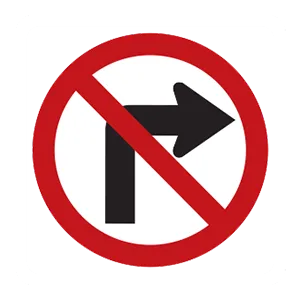
Regulatory signs provide notice to road users of traffic laws and must be obeyed. Where this sign is posted, making a right turn is prohibited.
Need Car Insurance? No problem!
Compare the best rates in Illinois and find a personalized policy that meets your needs.
1. Are You Currently insured ?
2. Married ?
3. Do you own your Home?
4. Do you have more than 1 car ?
5. Have you or a Family Member Honorably Served in U.S. Military ?
6. Your Name
7. Age
8. Zip code
IMPORTANT REMINDER:Auto Insurance is Mandatory to drive in Illinois. Get covered before you hit the road to avoid any fines.
Ranked by best match
